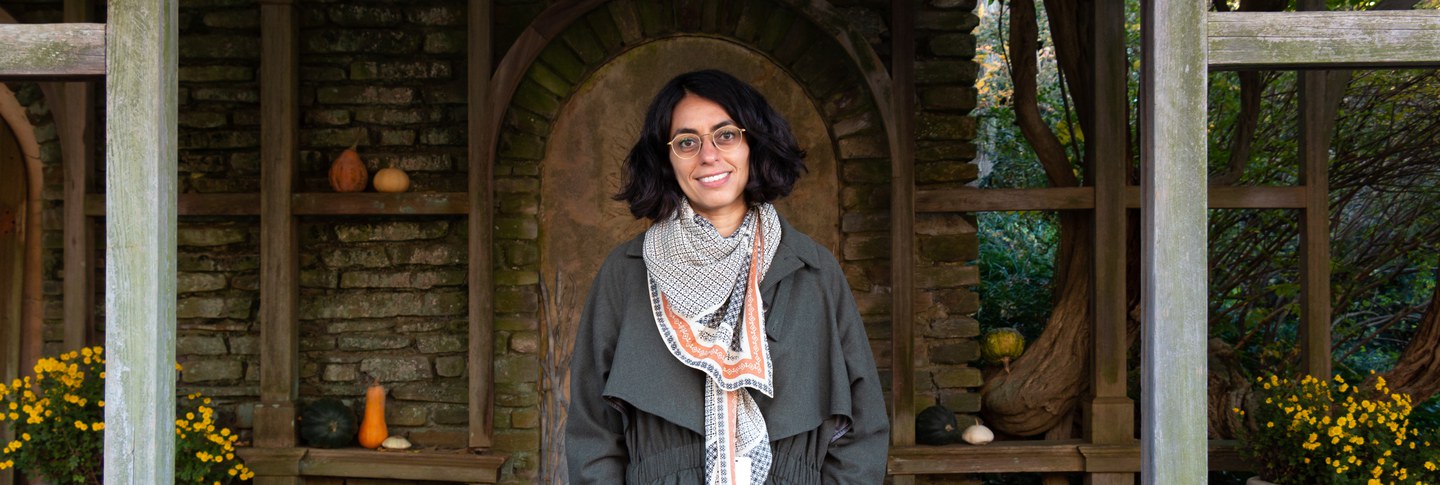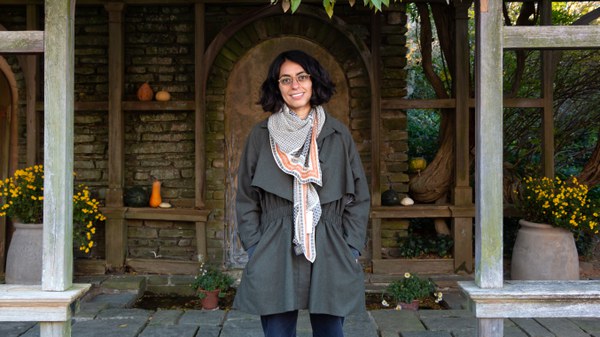Sarah Lopez, associate professor at the University of Pennsylvania, was a 2021–2022 Mellon fellow in Urban Landscape Studies. Her research report, “Architectural History as Migrant History: The Development of a Binational Construction Industry from Below,” discussed the network of laborers, craftsmen, and entrepreneurs in the cantera industry in Mexico and southwestern United States.
Q&A with Sarah Lopez
What is cantera and its role in Mexican and American architecture?
Cantera, which is a Spanish word that means “quarry,” is a stone found in Mexico. It is mostly used as a commercial term for stone made from volcanic ash, or tuff, that is found in the trans-volcanic geological belt in Mexico. Cantera was used to build a lot of Mexico’s colonial cities like Guadalajara and Queretaro, so from the perspective of people in Mexico it’s often associated with the preservation of a colonial fabric.
I’m interested in how people—many of whom have migrated to the United States for various reasons—have created a network that stretches from the quarries in Mexico to the suburbs and city centers of the US Southwest. Sometimes cantera is used to adorn businesses like Mexican restaurants, but it’s also used in personal homes and churches. To me, the material is important because of what it means for the people moving it.
What are some of the social histories and hierarchies that studying contemporary cantera has revealed?
One of the things I’m interested in is thinking about how we can understand macroeconomic terms like “global supply chain” in terms of specific social lives and the history of discrete places. So, on the Mexican side, I’m following the material from the quarry to the various workshops and processing centers that make the stone marketable to the transportation networks and distributors that bring the stone to markets in the United States. Finally, I trace it to Mexican and Mexican American clients who are commissioning the material.
Some people use cantera because the exact area it is harvested from is where they come from, and they want the stone that they grew up with relocated to where they currently live. But that’s not always the case—many people commissioning the stone aren’t necessarily getting it from the exact place they come from. So, the stone sometimes loses its geographic specificity and sometimes not. Either way, when commissioned by people from Mexico in the US, its presence in the US announces a connection to Mexico.
The people along the network I just described create a chain of relationships; they pass the stone from person to person until it reaches US suburbs. It is amazing to document the collection of people whose lives are impacted by this desire to have a uniquely Mexican material in the US; a desire that is logistically challenging to achieve.
Part of my work is understanding labor relations in Mexican towns dedicated to processing cantera. Another part is doing oral histories with businessmen and entrepreneurs who straddle both sides of the US-Mexico boundary. For example, there are men from Mexico who own dump truck companies in the exurbs of Austin, Texas. Their economic success has enabled them to build their dream house which includes cantera, so they become part of this emerging network. There are people who have emigrated from the borderlands region due to narcoviolence that today own small businesses shuttling cantera across the border.
Why is it important to “people the history of the built environment”?
At this point, I see myself as an architectural historian who uses the built environment to understand social history, and I’ve become increasingly invested in what a people’s history looks like¾using methods like oral history, onsite observation, and spatial ethnographies to foreground people and their role in making landscapes. Much of the project looks at labor: the people who quarry, craft, or haul. How can we think about these people’s histories as fundamental to thinking about the history of a house in the United States? It’s important to enlarge our purview from how the house is designed and its market value to the chain of relationships required to produce it, because until now, many the people who contribute to making certain built environments possible have been left out of the histories we tell. We don’t even know how big those histories are or who has been left out because we haven’t necessarily asked research questions that encompass this pre-history of building, that encompass their lives.
[Director of Garden and Landscape Studies] Thaïsa Way has been a great steward of the program, bringing us together and steering the energy, and it’s been a real pleasure to have ongoing conversations with colleagues who are friends and intellectual companions.
May Wang is postgraduate writing and reporting fellow. Photo by Emily Orr, 2021–2022 humanities fellow.

